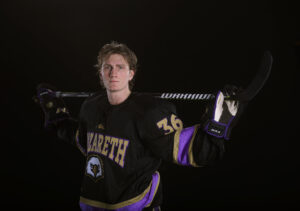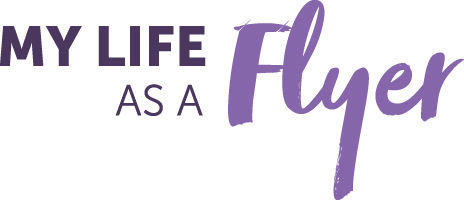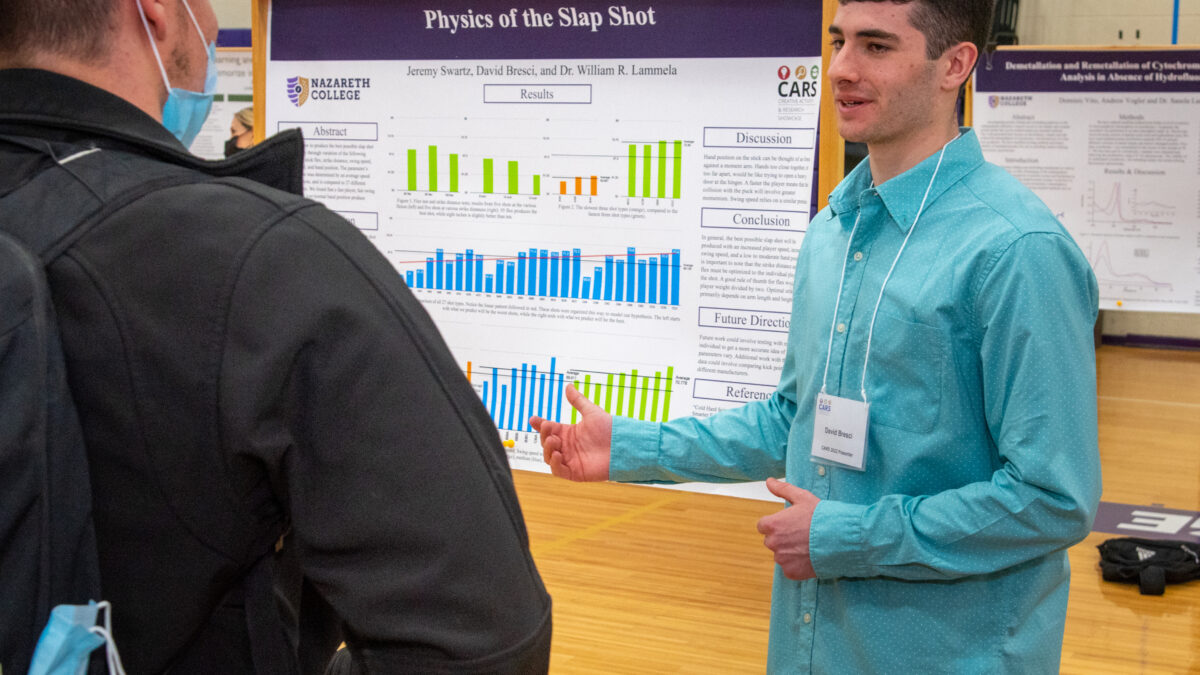For our physics final project, David Bresci (pictured above) and I decided to test out the physics of the slap shot. Due to the small class sizes at Nazareth, we were able to conduct personalized projects on virtually anything we wanted.
The college was able to get the materials we needed for our project, including a radar gun. It was also nice to be able to go off campus for the day and use my home ice rink for a class project.
I learned about managing a project and setting everything up. Most-overlooked details are sometimes the most challenging to work out. Thankfully, our coach helped us get ice time and allowed us to use different sticks from the team’s inventory.

We tested the parameters that would produce the fastest slap shot. We tested stick flex, strike distance, hand positioning, swing speed, and player speed. We shot five pucks with various flexes and used the best for the duration. Next, we shot five pucks at different strike distances, and used them for the duration. Then we tested all 27 combinations of the remaining three parameters to find the ideal combination. We were interested in understanding how to produce a good slap shot from a physics perspective.
In terms of a slap shot, my preconceived notions were confirmed: Fast player speed and fast swing speed will result in a faster shot. Also higher hand positioning will result in a slower shot.
When I presented my project at the 2022 Creative Activity and Research Showcase on campus, a lot of people asked if I had made any modifications to my game as a result of my experiment, which is a great question. I certainly try to focus on swing speed when shooting, but in the middle of a game it’s rather difficult to fine tune and focus on all these aspects at once.
As I enter my sophomore year and continue to play defense for the men’s hockey team, this project has helped me to incorporate quicker and faster shots.

